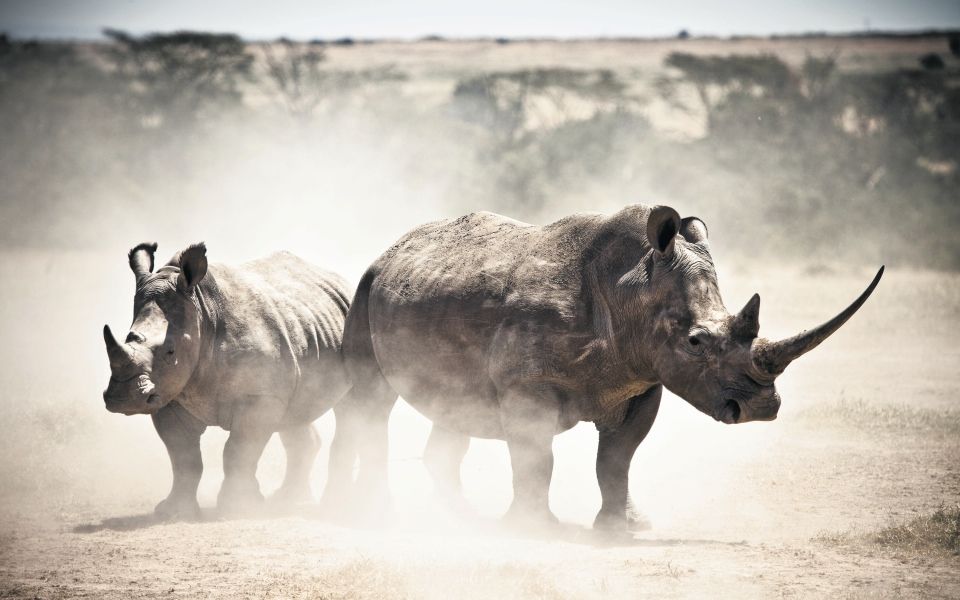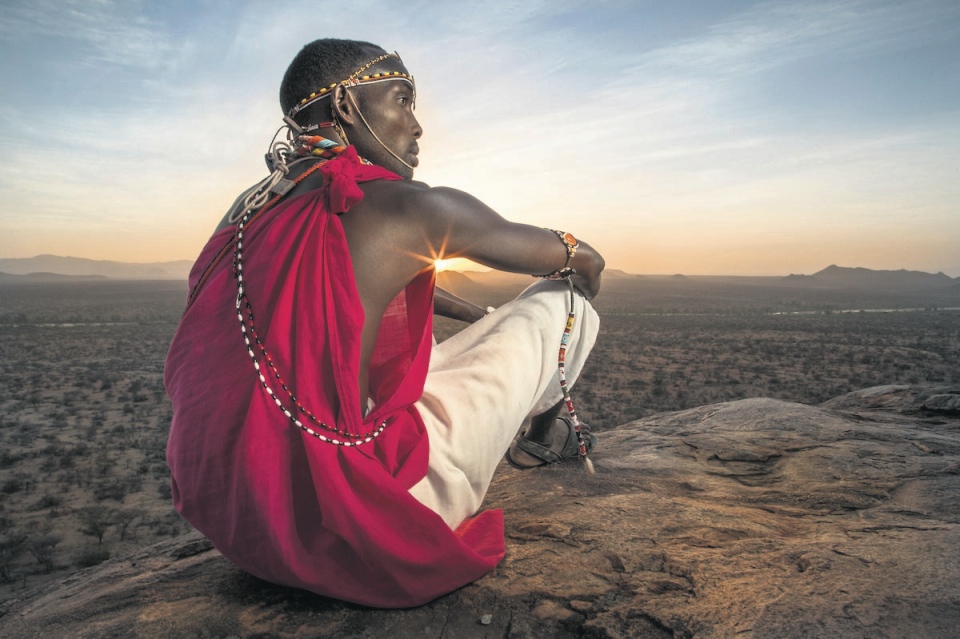Fantastic Beasts and Where to Shoot Them: We went on safari with Kenya’s top photographer

Normally at hotels I’m rather picky about who joins me for breakfast, but this time I made an exception. Or as much of an exception you can claim to make when a herd of wild Rothchild’s giraffes wander over uninvited to pop their necks through the lodge’s windows in search of a bite to eat.
I don’t think protesting their arrival would have been especially effective. The beasts are regular visitors to the aptly named Giraffe Manor, and once they’d had their fill of breakfast – and made a mess of the white linens with their slobbering, contortionist tongues – they posed for a couple of impromptu shots and then promptly left, crossing the rusty dirt and back into the bush on the outskirts of Nairobi.
The spectacle of a series of curious giraffe heads poking through the windows of a refurbished 1920’s brick manor house had ruined a perfectly good bowl of muesli, but made for great Instagram fodder. “How did they get the taxidermy to look so natural?”, one friend asked. The event stood us in good stead for a week-long photography safari hosted by National Geographic photographer Robin Moore.
Moore is the official photographer for The Safari Collection, which owns and runs four properties across Kenya. For years he’s captured everything from migrating wildebeest to Samburu tribe warrior dances. Now, in an effort to attract visitors in an increasingly competitive safari market, he’s turned tutor for the guests.
And it’s worked. The leader of our team of six had booked her stay a full year in advance after seeing Moore’s name on the docket, and the fan-girling starts from the first tutorial. Personally, I don’t know my aperture from my ISO, and I’m concentrating hard by the time Moore reaches the fourth slide of his introductory PowerPoint presentation.
But you don’t need a zoom lens to see why this lodge attracts so many visitors. Unzipping the door to my circus tent of a Swahili-Moroccan themed safari suite reveals wrap-around verandas, super king beds, al-fresco showers and plush pillows. The private plunge pool seems only marginally more refreshing than the watering hole enjoyed by the family of elephants on the river bed below.

A Samburu tribesman (Source: Robin Moore)
Sasaab Lodge certainly isn’t roughing it. As if to emphasise the point, there’s a menu for private helicopter tours on my desk, with prices starting at $7,500 per person. And if taking to the skies for an escorted landing at the top of Mount Kenya isn’t your bag, this all-inclusive safari camp hop offers a varied, week-long itinerary that leans heavily on the side of luxury.
I drink sundown cocktails with white rhinos at Solio Lodge and take early morning excursions to visit local Samburu tribes. I witness traditional dances in which colourfully clothed young Samburu men sing in circles and try to out-jump each other to impress the heavily beaded local ladies. Peacocking has existed here for millennia, and the locals didn’t bat an eyelid at being harassed by ogling tourists armed with Canons and Nikons.

The Solio Lodge
It is abundantly clear from the moment I touch down just how close to nature I am. My Sasaab hosts welcomed me with a veiled warning. “A guide with a torch will always take you to your suite at night,” although I wasn’t so convinced that a torch would be much of a match for a 100lb leopard. Thankfully my only neighbours were a polite pair of cartoonishly cute dik-diks, a tiny antelope. The al-fresco shower was grand, but had me constantly looking over my shoulder, concerned that in an environment where both food and water are scarce, an offering of steamed homosapien would be irresistable to nearby would-be diners.
Later one of the hosts, a former TV presenter, played to the audience as he carefully removed a small spitting cobra from the main kitchen. “Oh, she’s a feisty little thing,” he said, avoiding a squirt of venom from his newfound friend. The baboon howling and carnivorous growls sound closer than they actually are. At least that’s what I told myself in my pitch black suite. Repeatedly.
Of course, in the soft light of dawn it was a whole different story. I wanted to be as close to the wildlife as possible, and was desperate to spot anything with four legs. It wasn’t long before our guides spotted drama unfolding in the West Gate Community Conservancy. A lone female leopard sprinted past the back of our truck, bolting through the scrubland to escape a lioness twice her size. The big cat trailed her close behind, hoping to kill this rival predator. There was hardly time to adjust exposure settings as we watched the chase unfold from front-row seats. And with such a small group of novice photographers spread across two vehicles, there wasn’t any jostling for space when we did come in close contact with animals. The only rivalry was in who could shoot it all best, a contest I got better at as the week went on.

Josh's candid snap of an interloping giraffe (Source: Josh Martin)
As the flight lifted above Nairobi, I scrolled through the thousands upon thousands of shots I had taken during my stays at Sasaab and Solio Lodge. But my favourite was of the cheeky giraffe in a place it shouldn’t venture, taken on a smashed up Samsung Galaxy phone in the dining room at Giraffe Manor.
“There is some great technology out there and you can learn a lot if you study it, but sometimes you're just in the right spot at the perfect time,” Moore had replied when I complained that my amateur camera was not quite up to the National Geographic standard.
Ever the workman blaming his tools, I wrapped the fleece blanket around myself tighter and waited for the sun to rise over Mount Kenya. If you’ve got to stake out for the perfect shot of silhouetted white rhinos, there are far worse ways to go about doing it.
Fly to Nairobi with British Airways from London Heathrow.
The next departure dates for the Robin Moore Photographic Safari are between 16 – 22 March 2018. Rates start from $5,960 per person sharing.
Rates at Giraffe Manor start from $550 per adult sharing on a full board basis and including airport transfers.
For more info on The Safari Collection visit thesafaricollection.com